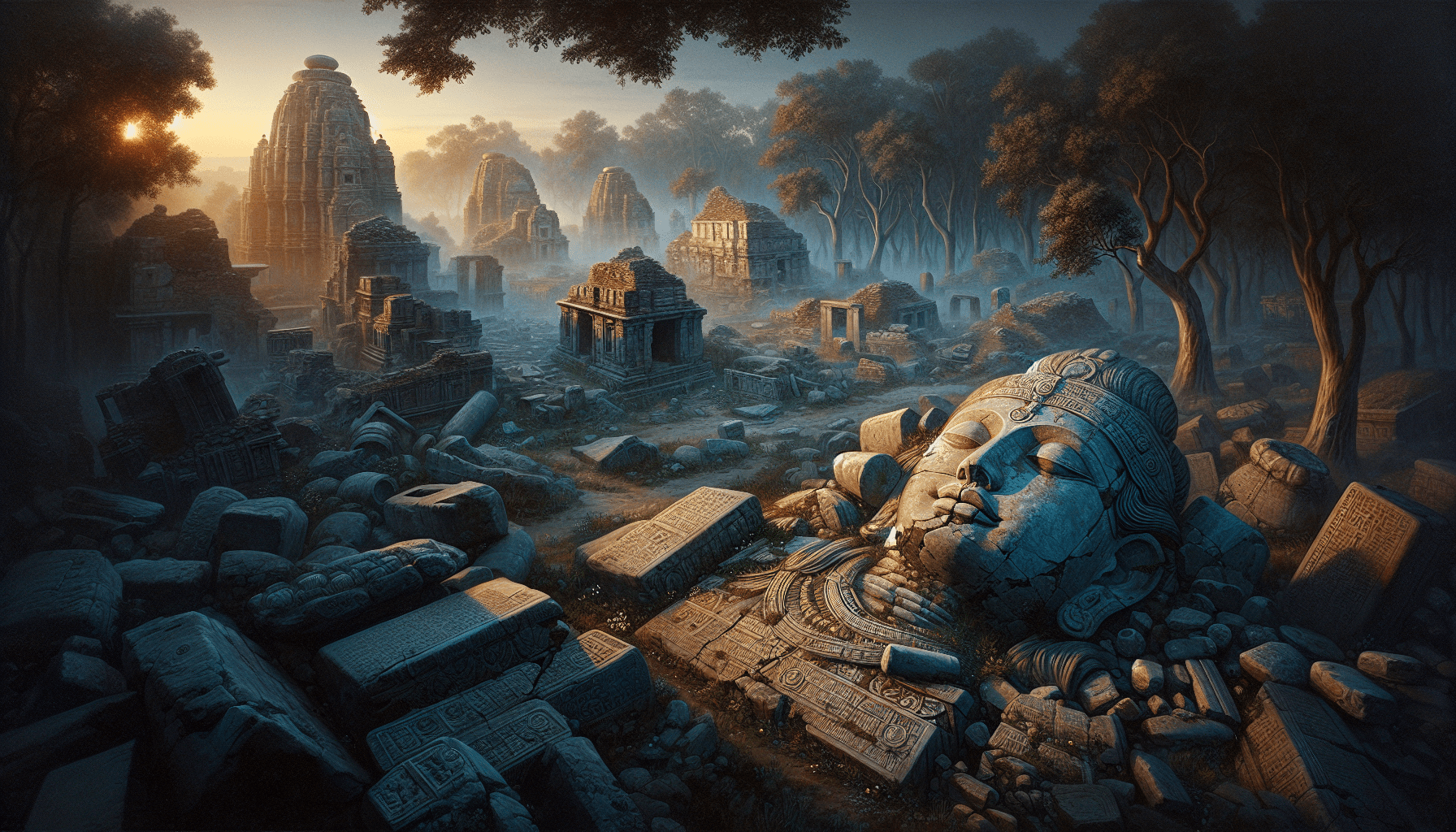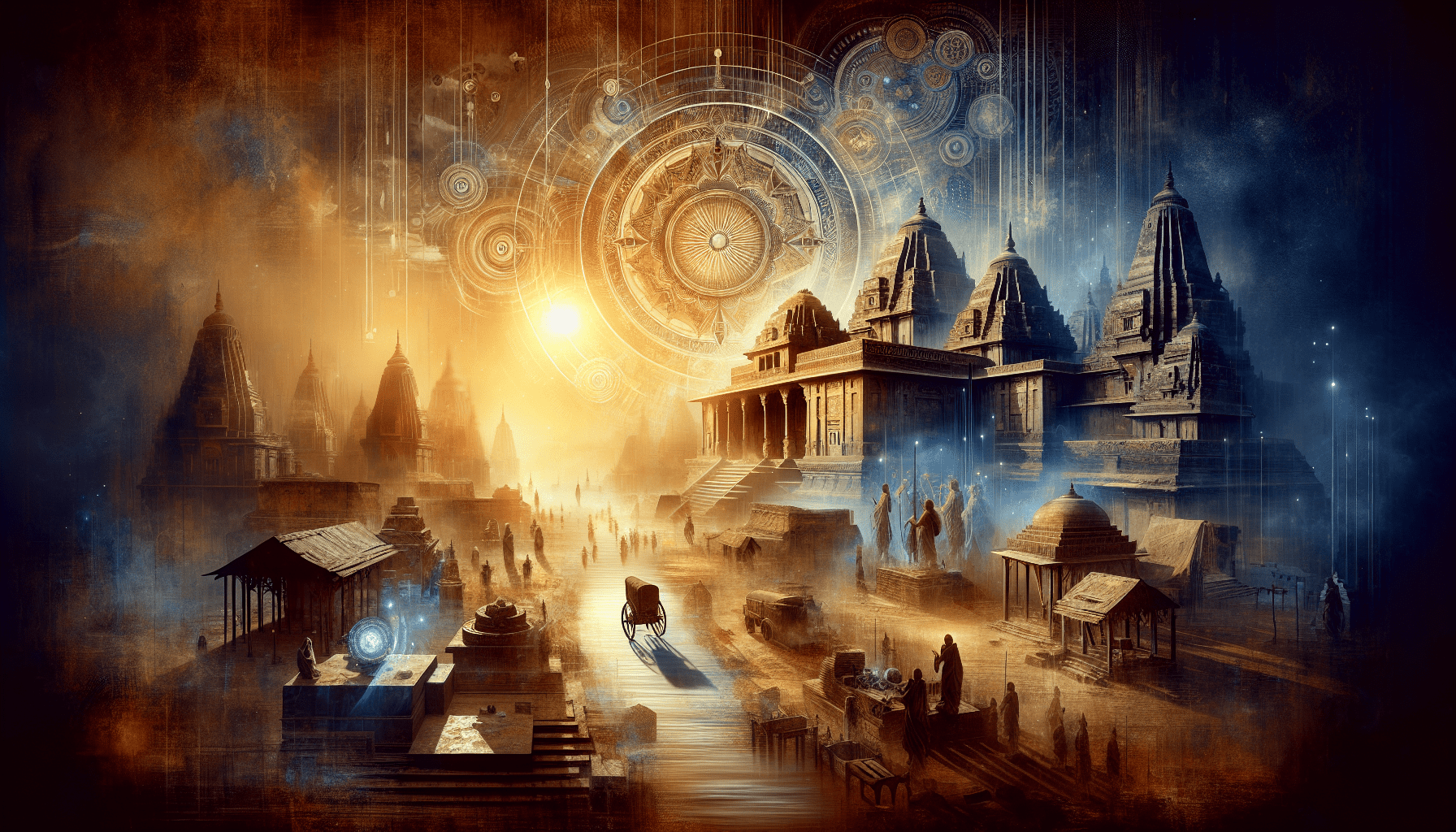Have you ever wondered if Ayodhya is truly an ancient city? Located in northern India, Ayodhya has long been steeped in mythology and historical significance. From being the birthplace of Lord Rama, according to Hindu mythology, to being the center of a controversial religious dispute, Ayodhya has captured the imaginations of millions. In this article, we will explore the historical background and archaeological evidence behind Ayodhya’s claim to ancient origins, shedding light on the intriguing mystery that surrounds this enchanting city.
Table of Contents
Historical Significance
Ayodhya, the city located in the northern Indian state of Uttar Pradesh, holds tremendous historical significance. Recognized for its ancient past and rich cultural heritage, Ayodhya is steeped in mythological and historical legends, making it a captivating destination for pilgrims, historians, and tourists alike.
Mentioned in Ancient Texts
Ayodhya’s historical relevance can be traced back to its mentions in various ancient texts. The city finds references in notable scriptures such as the Valmiki Ramayana, Tulsidas’ Ramcharitmanas, Mahabharata, and even Buddhist texts. These ancient texts provide insights into Ayodhya’s glorious past and its significance as a spiritual and capital city.
Birthplace of Lord Ram
The belief that Ayodhya is the birthplace of Lord Ram, the seventh avatar of Lord Vishnu, adds to its historical and spiritual prominence. According to religious beliefs, Ayodhya is said to be the place where Lord Ram was born over thousands of years ago.
Ancient Kingdom
Ayodhya also holds the distinction of being an ancient kingdom, which was once ruled by sagacious kings. The city is mentioned in great detail in the Valmiki Ramayana as the illustrious kingdom ruled by Lord Ram’s father, King Dasharatha. Ayodhya was known for its opulence, prosperity, and adherence to righteous values during that era.
Archaeological Excavations
Archaeological excavations conducted in and around Ayodhya have shed further light on its historical significance. These excavations have unearthed ancient structures, pottery, and artifacts, providing tangible evidence of Ayodhya’s glorious past. The findings have bolstered Ayodhya’s reputation as a city with an extensive heritage.
Mentions in Ancient Texts
To comprehend Ayodhya’s historical significance, one must delve into the ancient texts that mention this illustrious city.
Valmiki Ramayana
The Valmiki Ramayana serves as a primary source of information about Ayodhya’s past. This epic poem, composed by sage Valmiki, narrates the life of Lord Ram and his journey. It describes the grandeur and prosperity of Ayodhya during Lord Ram’s reign and provides vivid details about the city’s layout, palaces, and temples.
Tulsidas’ Ramcharitmanas
Tulsidas’ Ramcharitmanas, a retelling of the Ramayana, has further popularized Ayodhya’s historical significance. This ancient text discusses Ayodhya in profound detail, highlighting the city’s cultural and religious heritage. Tulsidas’ literary work has greatly contributed to Ayodhya’s reputation as the birthplace of Lord Ram.
Mahabharata
Ayodhya’s historical relevance is not limited to the Ramayana alone. The Mahabharata, another revered Hindu epic, mentions Ayodhya in several instances. It provides glimpses of the city’s splendor and plays a significant role in establishing its historical veracity.
Buddhist Texts
Ayodhya’s significance extends beyond Hinduism, as even Buddhist texts refer to the city’s association with Lord Ram. These texts mention Ayodhya as the birthplace of Chakravartin, a universal monarch who would possess extraordinary virtues and wisdom.

Birthplace of Lord Ram
Ayodhya’s association with Lord Ram is deeply ingrained in religious beliefs and historical narratives. The belief that Ayodhya is the birthplace of Lord Ram has profound religious and cultural implications.
Religious Beliefs
For millions of Hindus worldwide, Ayodhya holds immense religious significance as the birthplace of Lord Ram. The story of Lord Ram’s birth is narrated in the Ramayana, where Ayodhya is portrayed as a divine setting where the gods themselves descended to witness the joyous occasion. The belief that Lord Ram was born in Ayodhya has become an inseparable part of Hindu faith and devotion.
Ram Janmabhoomi
The term ‘Ram Janmabhoomi’ refers to the specific location in Ayodhya that is believed to be the exact birthplace of Lord Ram. It is considered a sacred spot and has been venerated by devotees for centuries. The immense reverence for this spot has led to numerous disputes and controversies, further cementing its historical and cultural significance.
Ram Temple Controversy
The Ram Janmabhoomi site has been at the center of a long-standing dispute, known as the Ram Temple controversy. The dispute arose due to conflicting claims between Hindus and Muslims regarding the ownership of the land. The religious sentiments associated with the site have fueled this controversy, making it a matter of national and international attention.
Ancient Kingdom
Ayodhya’s historical relevance goes beyond its religious significance. It was once an illustrious kingdom, ruled by wise and just kings, as documented in ancient texts.
Ayodhya in Valmiki Ramayana
The Valmiki Ramayana vividly describes Ayodhya as a splendid city, adorned with grand palaces, beautiful gardens, and flourishing markets. The text extols the virtues and nobility of Lord Ram, who ruled Ayodhya with compassion and righteousness.
Historical References
Apart from religious texts, Ayodhya’s historical importance finds mention in various historical accounts and ancient inscriptions. These references establish Ayodhya as a significant political and cultural center during different periods of history.
Ayodhya’s Importance
Ayodhya’s prominence as an ancient kingdom can be attributed to its strategic location, flourishing trade, and vibrant culture. The city served as a hub for art, architecture, and intellectual pursuits. Its historical significance resonates with its status as a center of power and cultural dynamism.

Archaeological Excavations
Archaeological explorations in Ayodhya have unveiled remarkable discoveries, providing concrete evidence of the city’s glorious past.
Babri Masjid-Ram Janmabhoomi Site
One of the most significant archaeological sites in Ayodhya is the Babri Masjid-Ram Janmabhoomi site. This site gained prominence due to the dispute surrounding it but also led to extensive excavations that brought forth significant historical findings.
Archaeological Survey of India Findings
The Archaeological Survey of India (ASI) undertook several excavations at the Babri Masjid-Ram Janmabhoomi site. The findings revealed the existence of a large complex of ancient structures that date back centuries. These structures included pillars, walls, and remnants of a temple-like architecture.
Presence of Ancient Structures
The excavations provided evidence of the presence of ancient structures dating back to the Kushan and Gupta periods. This discovery bolstered the claim that Ayodhya has been an important city for thousands of years, demonstrating its historical continuity.
Evidence of Hindu Temple
The archaeological findings at Ayodhya provided compelling evidence of a Hindu temple beneath the Babri Masjid structure. The presence of architectural elements, sculptures, and pillars with intricate carvings depicted Hindu deities, affirming the existence of an ancient Hindu temple.
Controversies and Disputes
Ayodhya’s historical significance has often been overshadowed by the controversies and disputes that have surrounded the city and its religious sites.
Babri Masjid-Ram Janmabhoomi Dispute
The contentious dispute between Hindus and Muslims over ownership of the Babri Masjid-Ram Janmabhoomi site has been a longstanding issue. The dispute had its roots in conflicting claims regarding the historical and religious significance of the site.
Legal Battles
To resolve the Babri Masjid-Ram Janmabhoomi dispute, legal battles ensued for several decades. Numerous court cases and legal procedures were followed, and the dispute became a focal point for national and international attention.
Supreme Court Verdict
In 2019, the Supreme Court of India pronounced its verdict on the Ayodhya dispute. The apex court ruled in favor of the construction of a Hindu temple at the disputed site, while also granting alternate land for the construction of a mosque.
Impacts on Ayodhya’s Ancient City Status
The Ayodhya dispute significantly impacted Ayodhya’s ancient city status. The prolonged legal battles and controversies overshadowed the city’s historical importance, affecting its tourism potential and preservation efforts.
Tourist Attractions
Ayodhya offers a multitude of tourist attractions that cater to both religious and historical interests.
Ram Janmabhoomi
The Ram Janmabhoomi site, where Lord Ram is believed to have been born, remains one of the most significant tourist attractions in Ayodhya. Pilgrims and devotees visit this sacred spot to pay homage and seek blessings.
Hanuman Garhi
Hanuman Garhi, a temple dedicated to Lord Hanuman, is another popular destination in Ayodhya. Situated atop a hill, this temple offers panoramic views of the city and attracts devotees and tourists alike.
Kanak Bhavan
Kanak Bhavan is an ancient temple dedicated to Lord Ram and his consort, Sita. The temple’s magnificent architecture, intricate carvings, and vibrant paintings make it a favorite among visitors.
Sita Ki Rasoi
Sita Ki Rasoi, translated as Sita’s Kitchen, is a revered site that holds great religious significance. It is believed to be the place where Sita Devi, Lord Ram’s consort, cooked meals during their stay in Ayodhya.
Valmiki Ramayan Bhawan
The Valmiki Ramayan Bhawan, a museum dedicated to the epic Ramayana, is a treasure trove for history enthusiasts. It houses ancient manuscripts, artifacts, paintings, and sculptures, providing a comprehensive understanding of Ayodhya’s mythological significance.
Religious and Cultural Significance
Ayodhya’s religious and cultural heritage is deeply intertwined, defining its significance as a pilgrimage destination and a hub of rituals and celebrations.
Pilgrimage Destination
Ayodhya is considered one of the seven holiest cities in Hinduism, attracting millions of pilgrims every year. Devotees visit Ayodhya to seek blessings and immerse themselves in the spiritual aura associated with Lord Ram’s birthplace.
Festivals and Celebrations
Ayodhya is renowned for its vibrant festivals and celebrations, which showcase its rich cultural heritage. The grandeur of Diwali, the festival of lights, is particularly notable in Ayodhya, as it commemorates Lord Ram’s return to the city after years of exile.
Ayodhya Art and Architecture
Ayodhya’s art and architecture reflect a harmonious blend of different influences, spanning centuries. Intricate stone carvings, temple architecture, and vibrant paintings adorn the city, exemplifying the artistic prowess of its artisans.
Religious Practices and Rituals
Ayodhya is steeped in religious practices and rituals, passed down through generations. From performing religious ceremonies by the Sarayu River to participating in sacred processions and yatras, Ayodhya offers a unique experience to delve into ancient rituals.
Modern Developments
Ayodhya’s historical significance has not hampered its progress as a modern city. Efforts have been made to promote infrastructure, revitalize tourism, and preserve its ancient heritage.
Infrastructure Projects
Several infrastructure projects have been initiated to enhance Ayodhya’s connectivity and facilitate tourism. Roads, bridges, and other necessary amenities have been developed to provide a seamless experience for visitors.
Tourism Boost
Ayodhya has experienced a significant boost in tourism due to increasing awareness of its historical and religious significance. The government has actively promoted Ayodhya as a tourist destination, attracting travelers from all corners of the world.
Reviving Ancient Heritage
Efforts are underway to revive Ayodhya’s ancient heritage and restore its historical sites to their former glory. The focus is on preserving the architectural marvels, promoting traditional craftsmanship, and providing a holistic experience of Ayodhya’s past.
Preservation Efforts
To safeguard Ayodhya’s historical legacy, various organizations and institutions have taken initiatives to preserve and conserve the city’s ancient structures, artifacts, and scriptures. These efforts aim to ensure that future generations can experience Ayodhya’s cultural heritage.
Conclusion
Ayodhya, with its historical significance, religious sanctity, and cultural heritage, stands as a city of immense importance and intrigue. Its mentions in ancient texts, association with Lord Ram, archaeological excavations, as well as its rich religious and cultural practices, have made Ayodhya a cherished destination. As modern developments further enhance the city’s infrastructure and revive its ancient heritage, Ayodhya continues to captivate the hearts of millions, embracing its glorious past while marching towards a promising future.